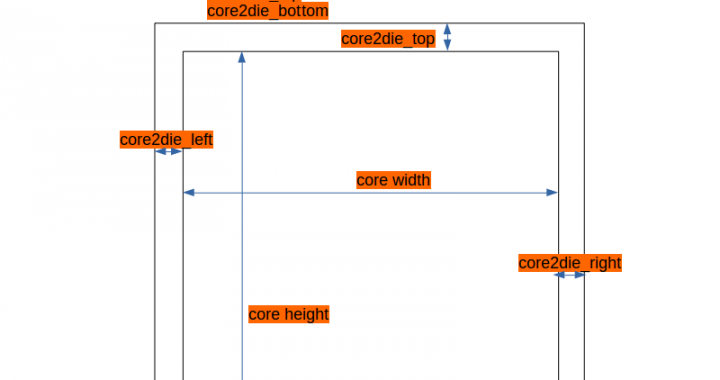What if, Inputs given for code development and testing are:
- Full hierarchical RTL code for any RISC-V micro-processor in Verilog format
- Industry grade 180nm PDK’s (standard cells, memories, pads) in LIB and LEF formats
And Expected output should be:
A text file in standard DEF format which has all information (shown in below image) about the core and die. “Remember – This is for hierarchical designs AND NOT FLAT“. So existing solutions will not work
All existing open-source solutions work very well for flat and within 25k instance count

Does that sound easy? It is easy and proven for a flat design, so this ideally should be just an extension to that as practically all designs in the world, are hierarchical designs
Let me suggest some steps to reach above point:
Step 1) Find a way to parse macro/memory/IP LEF’s and. libs. These files have all information regarding physical shapes & sizes, timing characteristics of all logic elements which will be used in design. It can be a command like below:
read_lef <list_of_all_lef_files> [you might want to refer to “lef read” command of MAGIC]
read_lib <list_of_all_lib_files> [you might want to refer to “read_liberty” command of yosys]
If lef file and lib file syntax is not in par is standard LEF and LIB syntax, issue an error message specifying line number where there is a syntax error
Find a way to parse synthesized hierarchical verilog netlist (about 300k instance count). It can be a command like below:
read_verilog <synthesized_verilog_file> [you might want to refer to “read_verilog” command of yosys]
If verilog file syntax is not in par is standard VERILOG syntax, issue an error message specifying line number where there is a syntax error
Step 2) Develop code (or command) to create core with either of below options (See below images for description)
- Hard-coding width and height OR
- Aspect ratio (height/width) and utilization factor
It can be a command something like below
create_my_core -width <number_in_um> -height <number_in_um>
OR
create_my_core -aspect_ratio <number> -utilization_factor <number_between_0_to_1>
If user gives -width/-height with -aspect_ratio/-utilization_factor, please issue an error


Step 3) Develop code (or command) to create die with below options (See below images for description)
- core2die_left
- core2die_right
- core2die_top
- core2die_bottom
It can be a command something like below
create_my_die -core2die_left <number_in_um> -core2die_right <number_in_um> -core2die_top <number_in_um> -core2die_bottom <number_in_um>

But there are terms and condition:
- Free to use the source code of existing (and only) opensource tools like magic, qflow, graywolf, qrouter.
- Each line of code needs to be open-sourced and documented

